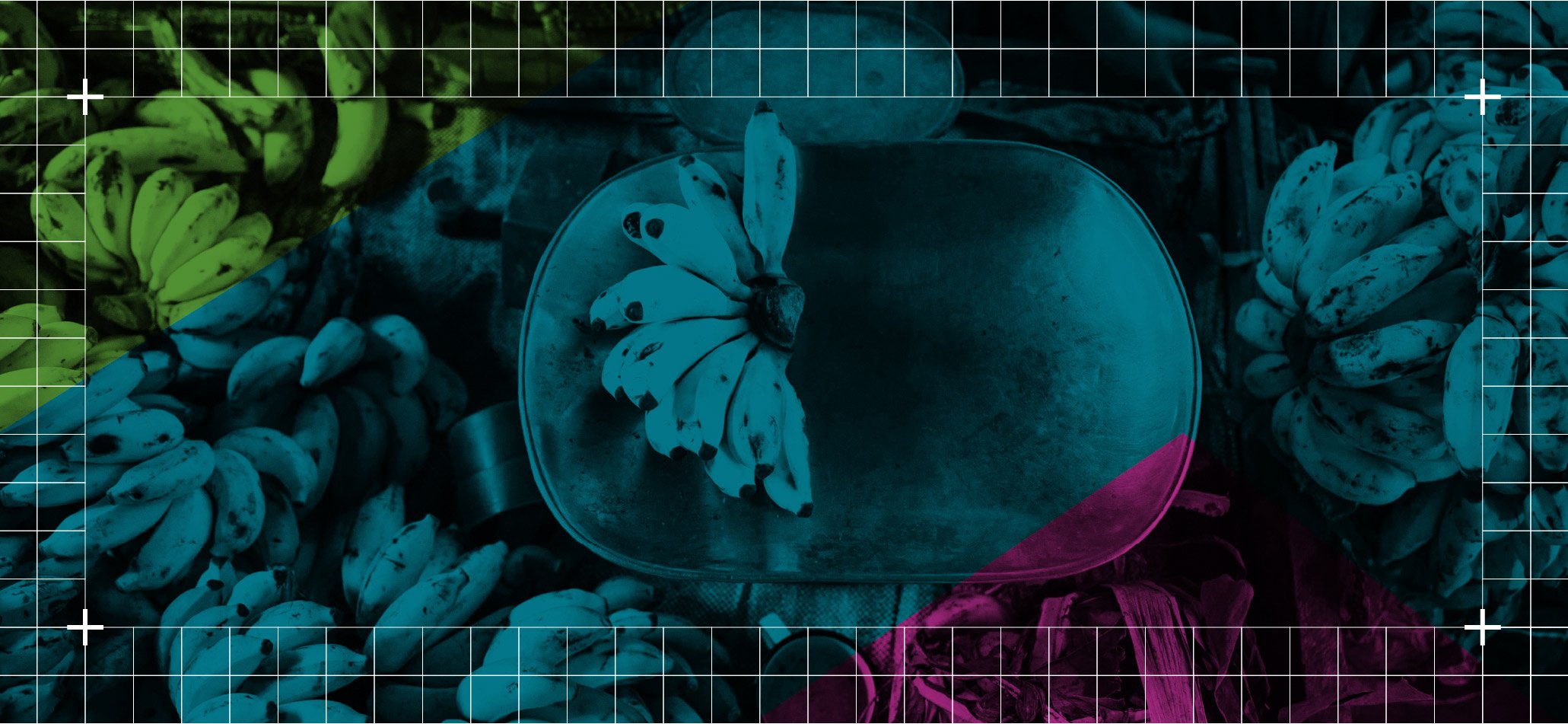Explore Blog Section
1.1. B Corp Certification
2.2. Collective Impact
3.3. Customer Discovery
4.4. Customer Effort Score
5.5. Customer Journey
6.6. Data Collection & Customer Insights
7.7. Impact Measurement Framework
8.8. Impact Model
9.9. IRIS+
10.10. Lean Data
11.11. Lean Data Survey
12.12. Logic Model
13.13. Net Promoter Score
14.14. Qualitative & Quantitative Data
15.15. SDG Action Manager
16.16. Social Return on Investment (SROI)
17.17. Theory of Change
Innovation
17 impact measurement tools you should know about + how to start using them
Explore tools to measure your impact more effectively and start building an impact framework that works for you
January 12, 2023
While various tools exist to help measure impact, it can be tough to know which to adopt, and how to apply them. The good news is impact measurement isn’t a one-size-fits-all endeavor, and the tools to measure impact aren’t mutually exclusive. You can use a combination of frameworks to build your own impact measurement practice — keeping in mind that the best approach is to use what works best for you.
We’ve gathered a list of 17 tools to help you learn more about impact measurement so that you can build the right frameworks to collect, measure, and act upon your insights.
1. B Corp Certification
B Corp Certification is a designation given to businesses (known as “B Corps”) that meet high standards of “verified performance, accountability, and transparency on factors from employee benefits and charitable giving to supply chain practices and input materials.”
According to B Lab, B Corps:
- Build trust with consumers, communities, and suppliers
- Attract and retain employees
- Draw mission-aligned investors
- Focus on continuous improvement
Learn more about the benefits of becoming a B Corp and what ti takes to get certified.
2. Collective impact
The National Council of Nonprofits defines collective impact as “an intentional way of working together and sharing information for the purpose of solving a complex problem.”
At Acumen, collective impact means understanding and contributing to the ecosystem — which is the broader marketplace or sector we’re trying to impact. Collective impact is about whether you’re contributing to the ecosystem in a way that drives change at a larger scale, beyond your own scope of work.
Two key questions you should be answering to drive your collective impact are: What are others in my sector doing? And how can I contribute what I’m doing, or what I’m learning, in ways that help others in my ecosystem advance their own impact?
One effective way to understand the larger system in which you operate is to adopt a systems practice approach, which can help you map out complex environments to gain clarity and identify specific points where you can drive real change.
3. Customer discovery
Customer discovery helps you test your hypothesis to figure out if your assumptions about what customers need and want hold true. It involves asking potential customers for input while you’re still building your new idea in order to test key assumptions that, if proven wrong, could cause your entire offer to fall flat.
Conducting customer discovery ensures you’re truly delivering value in the ways you expected. What you learn from the process is invaluable for making pivots and adjustments before you spend time and resources on a solution that doesn’t work or that people don’t want.
So, get out of the building and talk to your customers. Initially, you should be asking:
- Who are my customers?
- How do I know what they really want or need?
- What would happen if I knocked on their door and actually asked them, or, better yet, showed them a product I was working on?
4. Customer effort score
Customer Effort Score (CES) is another powerful metric to measure customer service satisfaction. The underlying assumption behind asking these questions is that companies create loyal customers by reducing customer effort.
Take the following question as an example: On a scale of 1-7, how much do you agree with this statement: “This product made it easy to solve my challenge.”
You should aim for an average score of around 5 — this is the minimum level where customers find it ‘easy enough’ to continue doing business with you. Rather than comparing yourself to other companies, the goal is to continue moving customers into ‘easy’.
At Acumen, we’ve been asking CES questions like this:
Do you agree or disagree with this statement: Overall, this product has made it easy for me to handle or resolve my issue.
Options for answers include: strongly disagree, disagree, somewhat disagree, neutral, somewhat agree, agree, strongly agree.
The CES is calculated by the average score (1-7) where strongly disagree = 1, disagree = 2, somewhat disagree = 3, neutral = 4, somewhat agree = 5, agree = 6, strongly agree = 7.
5. Customer journey
Your customer journey maps every interaction your customer has with your product, service, and company. When designing your impact measurement framework, identify all of the touch points where you already interact with or collect data from customers. For example, an intake form, at checkout, or a post-sale call. Can you incorporate some of your lean survey questions into these existing touch points?
When designing your survey, try mimicking the customer journey with the order of your questions. Before asking how their experience was, or what improvements they suggest, ask them how they heard about your service. Start from the beginning of the customer journey:
- How did you hear about us?
- How would you rate your experience?
- Has your quality of life changed due to XYZ?
- Do you have any suggestions for how we can improve XYZ?
6. Data collection & customer insights
In their Harvard Business Review article, Building an Insights Engine, Fran van den Driest, Stan Sthanunathan and Keith Weed write: “The new source of competitive advantage is customer centricity: deeply understanding your customers’ needs and fulfilling them better than anyone else.”
“You need data to accomplish this. Yet having troves of data is of little value in and of itself. What increasingly separates the winners from the losers is the ability to transform data into insights about customers’ motivations and to turn those insights into strategy.”
There are various approaches to data collection, which you can explore by enrolling in our Social Impact Analysis course. Here’s one customer-centric approach to get you started:
- Conduct a lean data customer survey: a simple survey to gain important insights and initial data about your customers, like the one described in the lean data survey section below. It can help you learn about your value proposition, impact, customer satisfaction, and competition.
- Analyze the data from your lean data customer survey. What are your customers telling you? What are the major ways they say your product, service, or program is changing their lives? You can use those insights to update your impact measurement framework.
- Set a timeline for how to integrate data collection into your customer’s journey. How can you set up systems to seamlessly collect data from them just after they’ve used or experienced your offering. Try to make the data collection easy and delightful for them, and follow up after a few weeks or months.
- Decide how you’ll incorporate your impact data into your organizational decision-making process and share it with others. This is a lot easier if you’ve identified a goal for your survey, and been strict about keeping your survey lean. Data is only as valuable as how you use it!
7. Impact measurement framework
An impact framework, or social impact measurement framework, is a step-by-step approach for how your organization collects, measures, assess, and reports its data and impact performance.
While there are many approaches to impact measurement, you’ll need to decide which tools and frameworks are most suitable to your work. This will largely inform how you go about data collection.
As an example, here’s Acumen’s approach to impact measurement:
- We define impact along three dimensions: breadth, depth, and focus on low-income customers.
- Then we use lean data to help us collect data across each dimension. Lean data is our primary approach to capturing data directly from end customers to understand the impact they experience.
- We create a theory of change to outline the projected impact of our investee company. We then use lean data to learn more about the poverty levels of actual customers, hear what’s important to them, and track outcomes.
- We recognize social impact is not linear, so we adopt systems mapping to design a strategy for our impact investing work.
8. Impact model
An impact model is your theory about the positive social impact people experience as a result of your product or service. You can design your hypothesis by defining the focus, depth, and breadth of your impact:
- Focus: Identify the characteristics and demographics of your customers. Who are you serving?
- Depth: What changes are happening in their lives because of your product or service? How much do you think your customers’ lives are changing because of your product or service? For how long?
- Breadth: How many total lives are you changing in a positive way?
9. IRIS+
According to Artemis Impact, “IRIS [Impact Reporting and Investment Standards] is a set of standardized metrics that can be used to measure and describe the social, environmental, and financial performance of organizations and businesses receiving impact investment capital.”
IRIS+ works as a standardized system that provides core metrics around key themes, such as energy access and financial inclusion, which aids impact leaders in finding relevant metrics to measure and identify their investments, strategies, and goals.
10. Lean data
Lean data is characterized by three main principles:
- Customer first: a shift in mindset away from reporting and compliance and toward creating value for customers and the company that serves them.
- Low-cost technology: the use of remote survey techniques for data collection that favor efficiency and speed while retaining rigor.
- Decision-driven: collecting feedback at multiple, continuous stages that can rapidly inform decisions.
In our course on Lean Data Approaches to Measure Social Impact, we break down 3 key steps to get started with Lean Data:
- Define your social impact thesis (or impact model).
- Identify the data you need to validate (or invalidate) your social impact thesis.
- Create a process to efficiently gather data in a way that respects customers and informs business decisions.
11. Lean data survey
A lean data survey is designed to quickly and affordably generate quality customer insights and relevant metrics. It focuses on creating a different experience of asking for and giving data — doing so in ways that are better, faster and cheaper than traditional methods for data collection.
By forcing yourself to ask only what’s relevant, a lean data survey helps you avoid the all-too-common problem of question overload, where as much data is gathered as possible on the off chance it could be useful later.
Here are 3 quick steps for designing a lean data survey.
Step 1: Customer Profile
Start by confirming the profile of the customer who is using your product or service. What market segment do they belong to? What geography do they come from? How well-served or under-served are they?
Here are sample questions to consider asking:
- What is your age?
- What is your gender?
- What store location do you visit?
- What is your monthly household income?
Step 2: Customer Experience
Next you’ll want to understand how customers experience your product or service. You can design questions that help you answer:
- What outcomes or changes does it create in their life?
- Are these changes positive or negative?
- How important are these changes to them?
Step 3: Adhere to the “Rules of Thumb”
- Drive towards decisions: What do you want to know, and why? Make sure your questions are relevant and actionable: what will you do with the information you collect?
- Focus on your end user: Get clear on who you want to take your survey. Who is your target customer? What might their prior experiences be with surveying and data collection? How can you make the process of taking your survey enjoyable?
- Make it rigorous: Focus on gathering reliable data. This will require you to check your biases and remove them from any survey questions. Avoid asking leading questions or overly broad questions.
12. Logic model
A logic model is similar to a theory of change. It’s a table or diagram that shows how your program will work to achieve the social needs you’ve identified. Like a theory of change, it outlines the resources you’ll need, the activities you’ll engage in, and the outcomes you’ll produce as a result of your work.
But while a logic model shows what you expect to happen, a theory of change explains why it will happen. A theory of change dives deeper into the causes of change — the program context, your assumptions, and other factors, while a logic model focuses more on the operations of the program itself, rather than on other external elements.
Read more from Analytics in Action about the similarities and differences between these two frameworks and when it’s best to adopt each one.
13. Net promoter score
Developed by Bain and Company, your Net Promoter Score (NPS) measures customer experience and helps you predict business growth. You can assess your NPS by asking quantitative questions like the ones listed below.
Take the following question as an example: On a scale of 1-10, how likely are you to recommend this product or service to someone else?
Based on their ratings, customers are then classified into 3 categories:
- Detractors: gave a score of 6 or less. They’re not really thrilled by your offering and likely won’t purchase again.
- Neutrals: gave a score of 7 or 8. They’re somewhat satisfied but could easily switch to a competitor’s offering if given the opportunity.
- Promoters: gave a score of 9 or 10. They love your offering and are repeat buyers, enthusiastic about your company. They'll recommend you to other potential buyers.
Your NPS is determined by subtracting the percentage of customers who are detractors from the percentage who are promoters. What you get is a score between -100 and 100, which is your NPS score. You should aim for an NPS score above 50%, taking the insights you gather from customers to improve their experience with your offering.
14. Qualitative & quantitative data
When designing your lean data survey, it’s important to use a mix of questions that'll help you collect both qualitative and quantitative data. Together, this data can help you understand how your customers feel about your offering and why.
Qualitative data questions are open-ended, allowing customers to provide details about why they use your product or service, and their reasonings and motivations for doing so.
Here are examples of qualitative questions:
- When you bought this product/service, what outcome were you looking for?
- To what degree have you experienced this change?
- How important is this change to you?
- Did anything else in your life improve that you think is important?
Quantitative data questions are more objective and can give you some benchmark data to help you determine how your customers feel about your product or service. Quantitative data can help you learn how your offering stacks up against other offerings.
Here are examples of quantitative questions:
- On a scale of 1-10, how likely are you to recommend this product or service to someone else?
- On a scale of 1-7, how much do you agree with this statement: “This product or service made it easy to solve my challenge.”
- Have you experienced any challenges using our product or service? Yes or No?
- Has the issue been resolved? Yes or No
15. SDG Action Manager
The SDG Manager was developed by B Lab and the United Nations Global Compact to help businesses self-assess their actions towards achieving the UN’s 17 Sustainable Development Goals (SDGs). It’s a unique impact measurement tool available to any business looking for ways to track and support the SDGs.
Here are some ways the SDG Action Manager can help your business:
Here are some ways the SDG Action Manager can help your business:- Identify which SDGs are most relevant to your work
- Learn about the impact your business model is having and share key insights
- Define goals and track progress with benchmarks to compare to other businesses
- Create one company dashboard to collaborate with your team members
17. Theory of change
A theory of change is a framework to help you organize your hypotheses for how your company will create impact over time. It helps you map out not just how an intervention or program will work, but why it will work. Your theory of change tells the story of how you will create change, for whom, over time. It explains your:
- Inputs: the resources you’ll contribute, such as solar lanterns.
- Outputs: what your inputs will produce, such as hours of light.
- Outcomes: an effect your work has on the people or issues you serve, such as better school outcomes for kids who have longer hours to study because of light.
- Impact: the long-term or indirect effects of your outcomes, such as increased GDP for the country because of better educated children and more hours of productivity for households.
- Assumptions: your assumptions come between the 4 key components above, and are the things that will have to happen in order for your theory of change to be achieved. For example, in order for you to have the impact described above, you assume customers are willing to purchase your solar lanterns. Mapping out these assumptions will help you see the kinds of things you should be measuring — such as the price customers are willing to pay for solar lanterns. These insights can help you know you’re on track towards achieving your longer-term impact.
For help defining your theory of change, check out our free course Theory of Change for Brand Communications.
A note on keeping humanity at the center of your data
Impact data is meaningful data collection that helps measure and improve impact for the people we aim to serve. For social innovators, it means thinking through how a product or service is impactful for people and the environment.
Historically, data collection has been considered as a way to satisfy researchers and donors, with little thought on how nonprofits or social enterprises can use this information to better serve their customers. When data is collected only to prove impact to donors, its potential to create meaningful change is diminished.
Put yourself in your customer's shoes when thinking about your impact data: If someone turned up to your place of work asking for several hours of your time to answer a string of questions, many of which were personal, how would you feel? If they then took that data and published a report you’d never see, would you feel valued? And what if it happened every six months? Would you want to answer these questions?
There’s the macro level, and then there's the nuances and differentials across culture, which always raises for me the moral question of who decides? Who decides what success is — particularly when listening to voices unheard and considering the biases or the perspectives that they bring? And how do we interpret that data?
Jacqueline Novogratz
Founder and CEO, Acumen
Considering the humanity of data, and the belief that data is critical to tackling the world’s greatest social challenges, means we must:
- Humanize the principles and practices of our own data collection
- Ensure people are active participants rather than passive subjects in data systems
- Empower all stakeholders by involving them in data collection, data interpretation, and decision-making
- Seize the opportunity to improve data literacy in culturally relevant ways
We can do this by providing results of data collection promptly back to customers and explaining why the information is useful. We can make a point to ask, and listen to, what people enjoy, or don’t enjoy, about their experience of giving data so that we can adapt to make it a more human experience.
Resources to keep learning
There’s no shortage of resources to help you put these tools and frameworks into practice. As you continue developing your impact measurement framework, here are additional courses and resources to help guide you.
Discover more ways to effectively collect and measure your impact in our Social Impact Analysis course.
Practice designing your own lean data survey using impact measurement firm 60 Decibels’ Remote Survey Toolkit and other available resources for lean data practices.
Enroll in our Lean Data Approaches to Measure Social Impact to learn about Acumen's Lean Data framework and how to apply it to your work.
If you’re looking to generate greater collective impact, start by understanding the systems that surround you in Acumen Academy’s Systems Practice course.
For more ways to grow your knowledge as a social innovator, explore Acumen Academy’s Course offerings.
Sign up to our newsletter
I have read and accept the Terms & Privacy



16. Social Return on Investment (SROI)
Social Return on Investment assigns monetary values to the social, environmental, and economic outcomes of a given intervention. In this way, it measures and values change as it relates to the people that experience it and the organizations that contribute to it.
As Sopact explains, “SROI valuation produces a ratio of benefits to costs or investments (inputs). For example, a ratio of 3:1 indicates that every $1 delivers $3 of social value.”
There are two types of SROI analysis:
- Forecast “is used as a predictive tool to determine the amount of social value that might be created given the outcomes sought.”
- Evaluative “is implemented after a program or activity has already had time to affect change. In other words, there are already outcomes to be measured.”
Read more about the principles of SROI and how to adopt it.